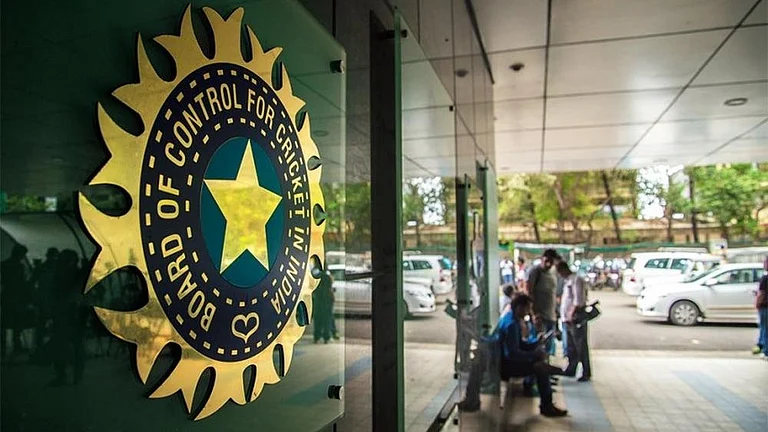The National Crime Records Bureau on December 3, released its annual Crime In India report showing a marked increase in crime rate in the southern states. In contrast, crime rates in the northern states remained relatively low, with some even reporting a decline.
In Kerala, the crime rate for all IPC crimes went from 401.4 to 661.0 per lakh population between 2021 and 2022, Telangana increased to 400.1 from the previous year’s 386.9. In the north, Madhya Pradesh showed a decline going from 358.3 to 347. UP and Bihar although did show a slight increase, the numbers remained relatively low at 171.6 and 168.1 respectively.
All India Lawyers Association For Justice (AILAJ) national president Maitreyi Krishnan believes the biggest reason behind the divide in numbers in the northern and southern states can be attributed largely to reporting practices.
“One of the things we have to keep in mind with the NCRB report is that they’re only recorded incidents. So in the southern states, it’s not that the incidents are more but that the reporting is much more in comparison to the north,” Maitreyi Krishnan said.
Taking the example of reporting of cases concerning crimes against scheduled castes and scheduled tribes, the Bengaluru advocate said, ”The reporting that takes place in UP for example is much much less. Let's say for caste atrocities, I'm not sure if people can go to the police station and report it.”
“This is something very common in cases of attack on the marginalised section of society because they are unable to go and report. Either they sense threat or the police simply refuse to register the FIR,” she said.
The annual report highlighted a 13.1 per cent increase in crimes against scheduled castes and a 14.3 per cent increase in crimes against scheduled tribes. Kerala had the highest crime rate in India for atrocities against scheduled tribes at 35.5 per lakh population. In the case of crimes against scheduled castes, while the rise wasn’t a significant one, all five southern states reported an increase in crime rates.
Maitreyi Krishnan says she has witnessed a definite rise in crimes against SC/STs. “A lot of it has to do with the prevailing ideology of the ruling dispensation,” she said.
She believes the system of inequality is perpetuated by the ideology of the governing parties. “If your ruling dispensation believes that people are unequal then this is bound to happen.”
The advocate says the uptick in crime has been marked by several reports but despite the increase, the conviction rate across India remains low.
“When the victim is from the marginalised community, whether it is Dalit or women, even religious minorities, the conviction rate under the Prevention of Atrocities Act is extremely low. The system in place is pushed towards making it fail rather than ensuring a conviction.”
The Supreme Court has also taken cognisance of the issue and said in cases of crimes against Dalits, it’s an uphill task to even get an FIR registered, Krishnan said.
“Outside of the reported data, we have many more unreported cases happening day in and day out and one has to view this very seriously,” she added.
Social activist Brinda Adige also believes the NCRB report findings are such because of higher crime reporting in the south. She says the report needs reform in its manner of inference.
“We know that crime in the north of India is much more than the south. Now with the NCRB making a report of this kind and talking about heightened crimes in southern states, I don't believe it because it is statistics, and inference from statistics is incorrect unless you also have other ground data,” she said.
Adige says the citizens and police in the southern states are more informed and duty-bound now as compared to ten years ago. “Five to ten years ago if someone went to register a case, we would have seen that the cops would have continuously compromised, counselled, somehow they got it into their heads that it is their job to compromise and counsel and settle the matter. Today there is no question of settling.”
Brinda Adige, who is actively involved in organising police training, notes that there has been a notable shift, with the police displaying increased proactivity in the registration of cases.
“We’ve been going around to police stations, we do a lot of training, we do interactions, we have group discussions where we ask victim survivors to come and talk and say what’s important. Almost 80 per cent of these victim survivors said, the fact that they’ve registered a case that itself is a big help. So that kind of confidence which the state has given, the fact that the state agencies have been able to do this is great. The NCRB now probably should modify its manner of inference because for us we are very happy that the police are registering the case.”
Talking about crime against women, Brinda Adige said, “Earlier in cases of cruelties against women which falls under 498A, the police used to refused to file saying that under 498A they would have to arrest the accused immediately. They said they’d be breaking the family and that it was not right and fair to break the family.”
The situation has now changed, she said.
In the NCRB report’s findings, reported cases of crime against women saw a significant jump in Andhra Pradesh, with the crime rate going from 67.2 to 96.2 per lakh population. Kerala went from 73.3 to 82.0 and Telangana from 111.2 to 117.
While in the northern states, where Rajasthan did report an increase from 105.4 to 115.1, the crime rate in Jharkhand and Haryana decreased. UP recorded a crime rate of 58.6 per lakh population while Bihar was at 33.5.



























